Year after year, the number of website accessibility lawsuits under the Americans with Disabilities Act (ADA) continues to rise. The healthcare industry is especially susceptible to accessibility lawsuits as doctors’ offices, dental practices, and insurance companies work with a variety of patients, are considered places of public accommodation, and may have additional requirements for accessibility under the Affordable Care Act (ACA).
If your website does not meet the accessibility requirements for healthcare websites, your organization could be at risk of a lawsuit.
Article continued below.
Stay on top of web accessibility news and best practices.
Join our email list to get notified of changes to website accessibility laws, WordPress accessibility resources, and accessibility webinar invitations in your inbox.
What Is Website Accessibility?
Website accessibility is the usability of a web page for one or more individuals with disabilities, which can include visual, auditory, motor, cognitive, or emotional impairments. To be fully accessible, a web page needs to work for all people, regardless of ability, and on a variety of devices, including assistive technology devices such as screen readers.
Why Accessibility Matters for Healthcare Websites
Recent CDC reports state that 1 in 4 U.S. adults has a disability. Disabilities that impact people’s use of a website can be something they are born with or may happen over time. A common challenge we all face as we age is the loss of vision. Blindness and low-vision represent two of the most common challenges for website users and low-vision, especially, is incredibly prevalent in our society. Web accessibility issues affect a large portion of healthcare patients.
Many people experience challenges accessing quality medical care. People with disabilities who cannot interact with websites in a typical fashion often have an even harder time accessing the information they need to find a doctor, view their medical records, fill a prescription, or determine their insurance coverage. In the age of COVID, with increased tele-doctor appointments and online scheduling, having an accessible website is especially important.
In addition to being the right thing to do, ensuring website accessibility improves your ranking in search engines, reduces your risk of lawsuits, increases your visibility, and allows for a greater number of conversions.
Website Accessibility Requirements for Healthcare Organizations
Whether you work for a hospital, doctor’s office, an insurance company, surgery center, or any other company that provides healthcare to patients, you’re legally obligated to make your website, mobile applications, and other software accessible to people with disabilities.
Healthcare providers and organizations may be required to meet Title III of the Americans with Disabilities Act (ADA), Section 508 of the Rehabilitation Act of 1973, and Section 1557 of the Patient Protection and Affordable Care Act (ACA). These requirements apply to all healthcare organizations that receive funding from the Department of Health and Human Services or other federal agencies, as well as insurance companies.
Americans with Disabilities Act (ADA)
There are five titles under the ADA, the first of which was originally published by the Department of Justice in 1990. Title III was implemented in 1991.
Since then, a number of website accessibility lawsuits have been filed under Title III. It states:
Title III prohibits discrimination on the basis of disability in the activities of places of public accommodations (businesses that are generally open to the public and that fall into one of 12 categories listed in the ADA, such as restaurants, movie theaters, schools, daycare facilities, recreation facilities, and doctors’ offices) and requires newly constructed or altered places of public accommodation—as well as commercial facilities (privately owned, nonresidential facilities such as factories, warehouses, or office buildings)—to comply with the ADA Standards.
Title III’s anti-discriminatory policies have increasingly been applied to websites and websites are now understood to be “places of public accommodation.”
Section 508
Section 508 of the Rehabilitation Act of 1973 details the requirements of any federally funded healthcare organizations to provide accessible information technology for individuals with disabilities. This means that technology or information that is used by or disseminated from healthcare organizations, including websites, must be accessible.
If the content of a website cannot be accessed by a member of the public with a disability or an employee with a disability, Section 508 states that the healthcare organization must make an effort to provide some means of access, whether through the purchase of new technology, or providing another alternative means of receiving the information.
WCAG 2.1
A 2017 update to Section 508 took into account the Web Content Accessibility Guidelines (WCAG) 2.0 and established that all non-web content, web content, and software must conform to the standards set forth in WCAG 2.0.
WCAG stands for Web Content Accessibility Guidelines. These guidelines define the ways in which you can make your website content more accessible to individuals with disabilities. These guidelines cover accessibility for a wide range of disabilities, including auditory, visual, cognitive, physical, speech, language, learning, and neurological disabilities. However, they are not able to cover the needs of every specific type, degree, and combination of disability.
Section 1557 of the Patient Protection and Affordable Care Act (ACA)
Section 1557 of the Patient Protection and Affordable Care Act (ACA) prohibits discrimination on the basis of disability in certain health programs and activities. This covers individuals with disabilities who participate in:
- Health programs that receive funding from the Department of Health and Human Services.
- Programs and activities that are administered by the Department of Health and Human Services.
- Health Insurance Marketplaces and all plans that are offered by issuers who participate in those Marketplaces.
Healthcare Website Accessibility Lawsuits
In recent years, several different healthcare entities faced website accessibility lawsuits. Many of these organizations made headlines when they disregarded required accessibility guidelines. Here are four examples of health care organizations that were sued for not having an accessible website.
WellPoint Health Networks Inc. – Insurance Company
WellPoint Health Networks Inc., a U.S. health insurance company now known as Anthem, faced a website accessibility lawsuit in 2014. Two visually impaired individuals in California, Sam Chen and Steven Mendelsohn, were members of a WellPoint Health Networks Inc. affiliate, Anthem Blue Cross.
Chen and Mendelsohn complained to WellPoint in 2011 that they had trouble accessing their website. The two parties engaged in legal negotiations a few months later, and, in 2014, WellPoint Health Networks Inc. signed a public accessibility settlement agreement, which included their plan to ensure their website complies with WCAG 2.0.
Tenet Healthcare – Hospitals
Tenet Healthcare oversees three hospitals in Florida: Hanemann University Hospital, Hialeath Hospital, and Coral Gables Hospital. The healthcare organization was recently hit with a class action lawsuit under the ADA, filed on behalf of blind Americans.
The lawsuit alleges that the hospitals’ websites were not accessible to screen readers. Screen readers allow blind or visually impaired web users to “read” the content of a page with either a speech synthesizer or braille display. Because the hospital websites could not be used by screen readers, they were inaccessible to blind individuals and therefore violated Title III of the ADA.
HCA Holdings, Inc. – Hospitals
HCA Holdings, Inc. is a healthcare service provider that oversees more than 100 hospitals in the U.S. In 2017, they found themselves in the middle of a website accessibility lawsuit.
Lisa Frazier, who is legally blind, filed the lawsuit when she could not access websites of the hospitals under HCA Holdings with her screen reader. Frazier’s lawsuit alleged that the hospital websites did not have alternative text for images and other visual content, and could not be navigated by keyboard only. This case is currently still pending.
CAC Florida Medical Centers – Medical Group
CAC Florida Medical Centers were recently involved in an ADA lawsuit after Andres Gomez, who is legally blind, alleged that the company’s website was not accessible to screen readers. The case, which appeared in Federal District Court in Florida, was eventually dismissed by the judge, however likely cost the medical parctice thousands of dollars in attorney fees to defend against.
Incorporating Website Accessibility Requirements for Healthcare
Even though some cases, such as the lawsuit between CAC Florida Medical Centers and Andres Gomez, are dismissed, it is important to realize that healthcare organizations are vulnerable to website accessibility lawsuits.
With the increase in online appointment bookings and virtual healthcare visits during the COVID-19 pandemic, it is essential that your healthcare organization’s website follows all required and recommended accessibility guidelines. If you are unsure where to start with these requirements, Equalize Digital can help.
Our accessibility team will work with you to solve problems, break down barriers, and ensure that your website and software is up to date with current healthcare accessibility standards and laws. Contact us today to learn more about how we can help.
